Introduction
Sleep problems are a pervasive issue among children with autism, affecting up to 80% of those on the spectrum. These disturbances, ranging from difficulty falling asleep to frequent night awakenings, not only impact the child's health and daily functioning but also create significant stress for their families. Studies have shown that poor sleep can exacerbate behavioral and emotional difficulties, making it crucial for parents and caregivers to address these challenges.
The pandemic has further heightened the prevalence of sleep issues due to changes in routine and reduced outdoor activities. This article delves into the common sleep issues faced by autistic toddlers, explores the underlying causes, and offers practical strategies and interventions to help improve sleep quality for these children. With a comprehensive approach, parents can better support their children's well-being and development.
Prevalence of Sleep Problems in Children with Autism
Sleep disturbances are notably prevalent in young individuals with autism, affecting up to 80% of those on the spectrum. These issues can range from difficulties in falling asleep to frequent awakenings throughout the night. Such disturbances in rest not only affect the overall health and well-being of the young one but also impose considerable pressure on their families. Studies have demonstrated that behavioral and emotional issues in young ones, which are already difficult, can be worsened by inadequate rest. For instance, children with ongoing rest disturbances are twice as likely to develop new emotional and behavioral difficulties compared to those with better resting habits. Recent studies highlight that the prevalence of disturbances during rest has increased, particularly during the pandemic, due to altered routines and reduced outdoor activities. Moreover, disparities in healthcare access across different regions further complicate the management of these rest-related issues. Effective strategies and interventions are urgently needed to support children with autism and their families in tackling these ongoing rest challenges.
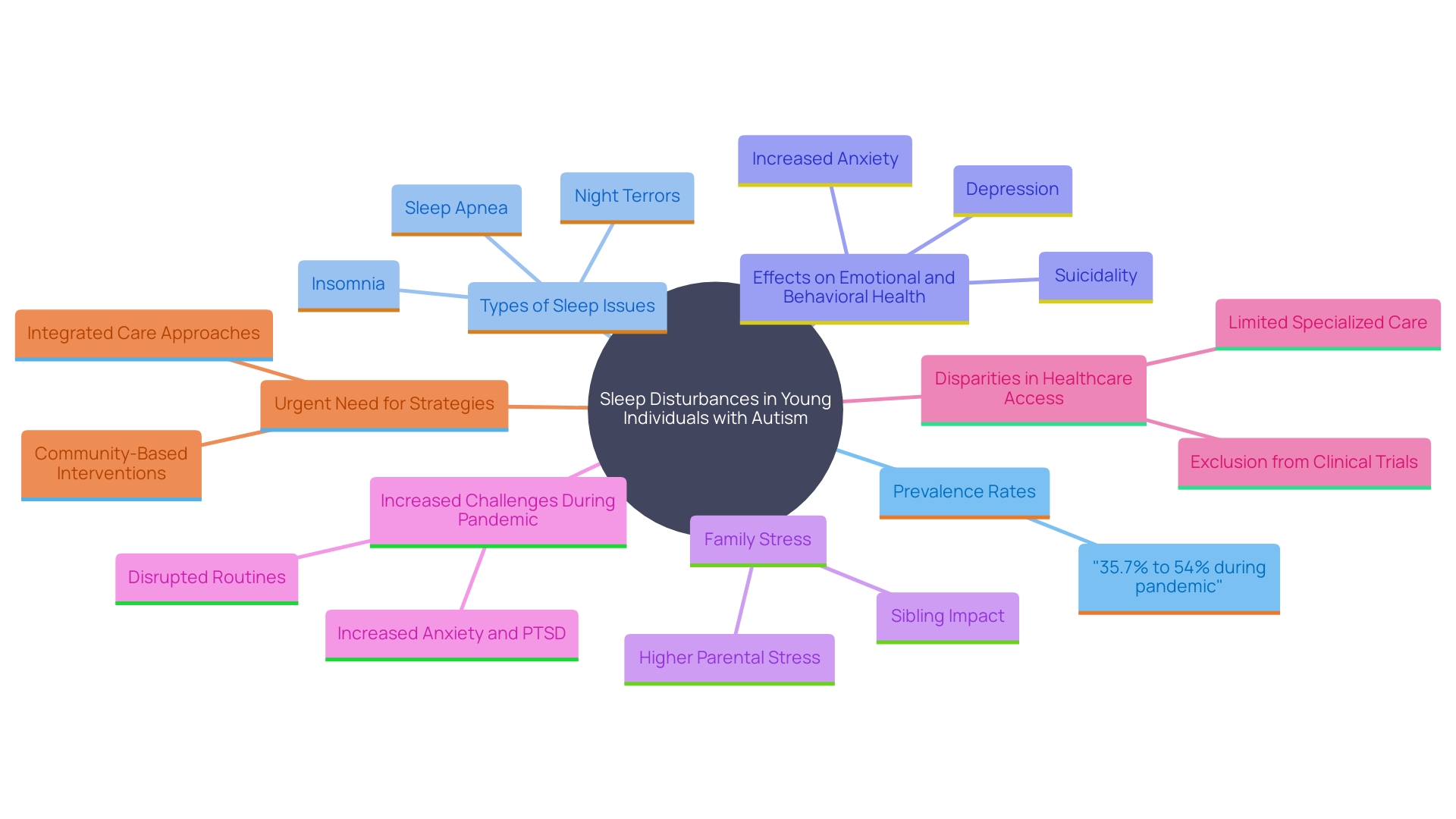
Common Sleep Issues in Autistic Toddlers
Autistic toddlers often encounter particular rest challenges, including insomnia, night terrors, and apnea during the night. Many struggle with settling down at bedtime, leading to late-night resistance or prolonged wakefulness. One study demonstrated that 29.3% of parents indicated difficulties related to rest in their infants, emphasizing how frequent these challenges can be. Furthermore, infants with itchy, dry, or flaky skin had a greater occurrence of rest difficulties, with 38.6% facing problems during rest compared to only 25.0% of those without such skin conditions. These restless nights can result in fatigue during the day, exacerbating behavioral and emotional problems and hindering overall development. Tackling these rest problems is essential for the health of children with autism and ADHD.
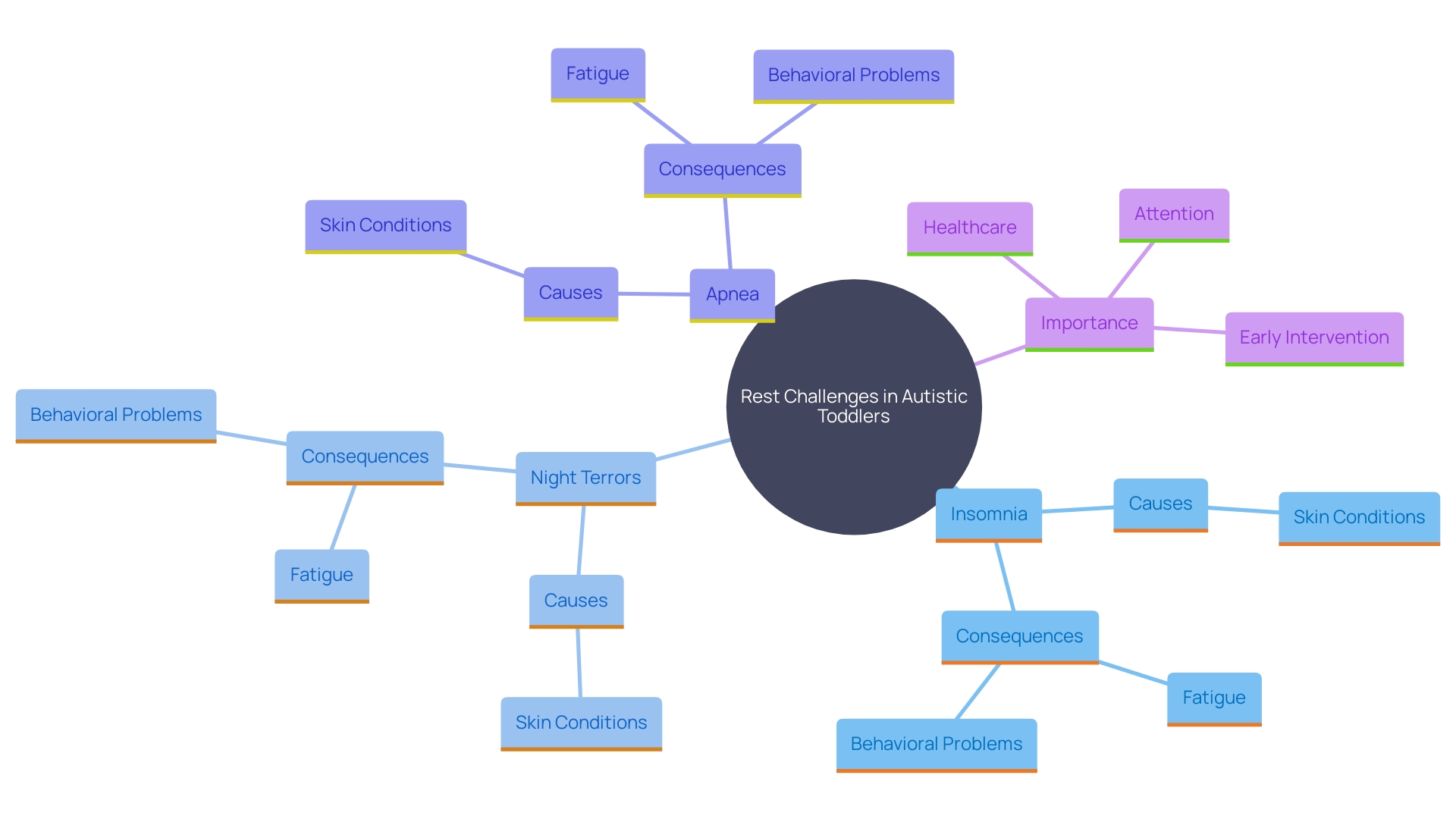
Causes of Sleep Problems in Autistic Toddlers
Sleep issues in autistic toddlers can stem from a variety of sources. Sensory sensitivities often make it challenging for them to find comfort in their surroundings, while anxiety and difficulties with maintaining routines can create additional obstacles to restorative rest. Additionally, biological factors, such as irregular melatonin production, frequently disrupt rest cycles. Research published in JAMA Pediatrics indicates an increase in melatonin usage among young individuals, with nearly 46% of parents turning to this supplement to assist their offspring's rest. However, experts emphasize that melatonin should only be a short-term solution, pointing to potential long-term effects and the need for professional guidance. Furthermore, recent studies underscore a connection between cerebrospinal fluid irregularities in infants and subsequent rest disturbances, especially in children with autism. This connection highlights the complexity of slumber difficulties and the importance of early intervention and comprehensive care.
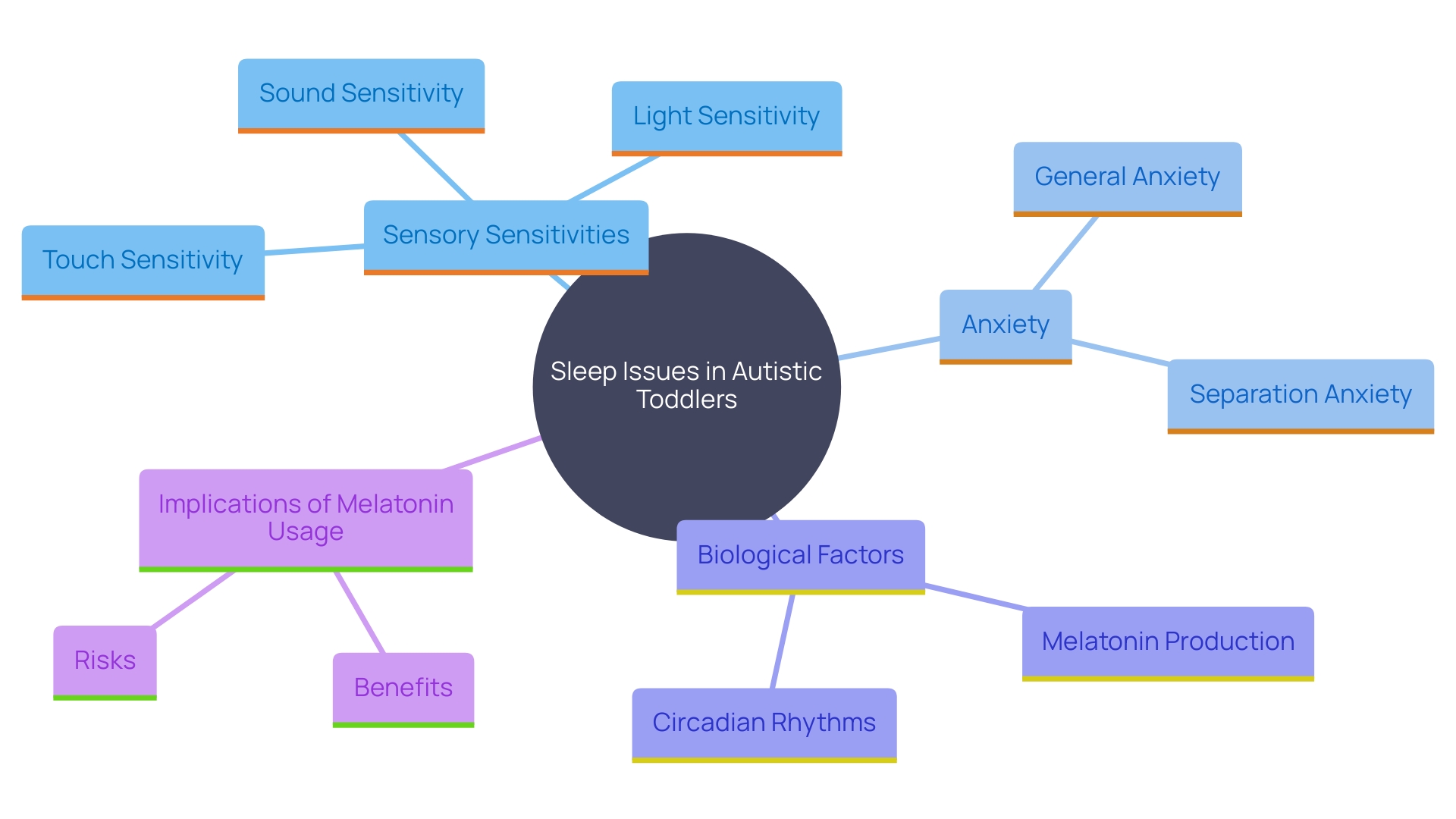
Strategies for Improving Sleep in Autistic Toddlers
Implementing organized nighttime routines can greatly improve rest quality for autistic toddlers. Creating regular rest routines and participating in soothing activities prior to bedtime are crucial measures. Establishing a cozy resting atmosphere is also crucial. For instance, modifications like removing screens during evening hours and incorporating sensory-friendly sleep solutions, such as weighted blankets or white noise machines, can promote a soothing atmosphere.
It's important to tailor these routines to each individual's unique needs and family dynamics. Behavioral approaches can be effective, but they must be customized to the individual child. Notably, some families prefer shared sleeping arrangements due to cultural values or practical reasons, and these preferences should be respected. Research underscores that early interventions and responsive parent-child interactions can improve social communication and other core challenges associated with autism.
Furthermore, recent research emphasizes the long-lasting effects of early brain development on rest patterns. Research from the Infant Brain Imaging Study indicates that abnormalities in cerebrospinal fluid (CSF) dynamics in infancy are linked to higher rates of disturbances during rest later in childhood. This highlights the significance of tackling rest problems early to lessen long-term consequences.
Integrating expert advice with natural treatments guarantees a thorough method for addressing rest difficulties. A consistent rest routine advantages both youngsters and caregivers by regulating circadian rhythms and encouraging deeper, more restorative slumber.
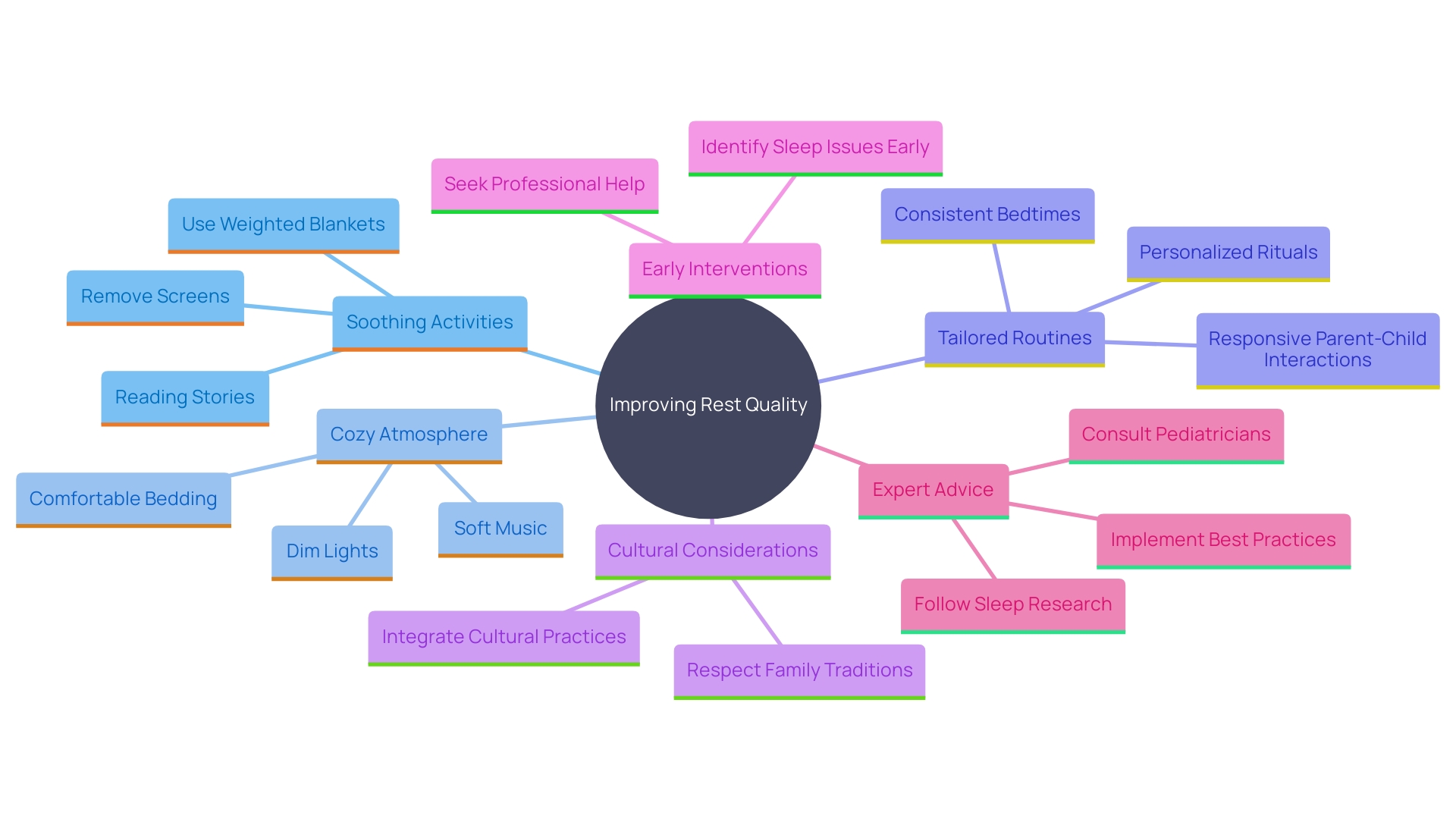
Establishing Good Sleep Hygiene
Encouraging restful slumber in toddlers necessitates establishing good rest hygiene practices. Restricting screen time prior to bedtime is crucial, as studies indicate that screen usage negatively affects rest quality among young people and teenagers. The light from screens can decrease melatonin levels, making it more difficult for young ones to fall asleep. Establishing a bedroom atmosphere that is dark and quiet can significantly improve rest quality. Maintaining a consistent bedtime routine is also crucial. Including relaxation methods, like gentle massage or reading, can assist in getting youngsters ready for rest. As per rest specialist Fernandez-Mendoza, instructing youngsters to identify indications of drowsiness and directing them to rest at the appropriate hour is similar to toilet training – it demands consistency and patience.
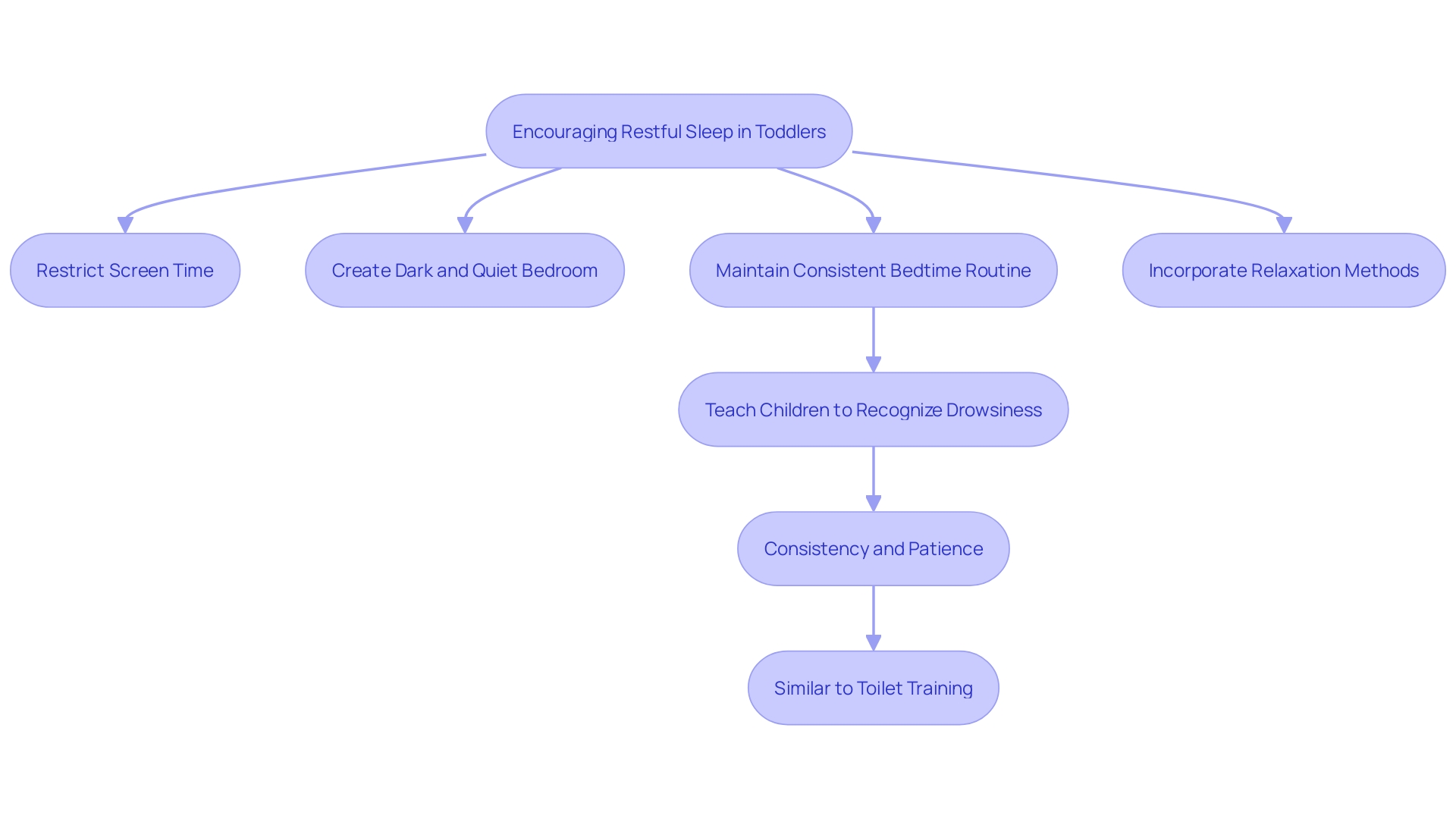
Addressing Sensory Issues and Anxiety
For many autistic toddlers, addressing sensory processing issues and anxiety is crucial in improving sleep quality. Engaging with occupational therapists, such as those experienced in sensory integration therapy, can be invaluable. These professionals assist in recognizing sensory triggers and creating coping strategies customized to each individual's unique requirements. Methods such as deep pressure therapy, which replicates soothing sensations, or the use of relaxing music, shown to improve comfort and physiological stability in young ones, can greatly alleviate anxiety and encourage relaxation before sleep. The unified method of customized support and expert advice establishes a solid basis for improved rest and overall wellness for autistic children.
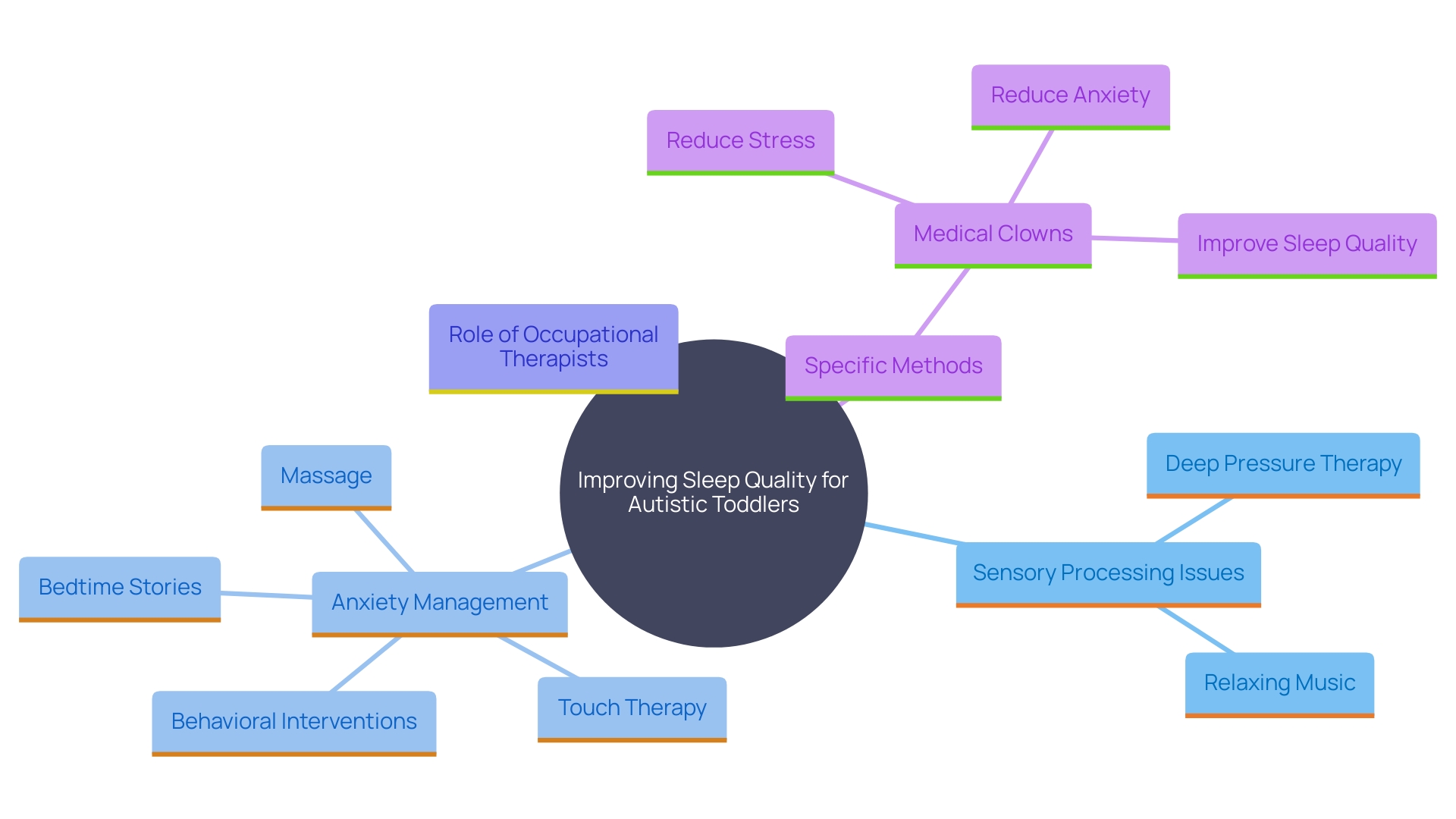
Medical and Behavioral Interventions
In certain situations, resolving rest difficulties in autistic toddlers may necessitate medical or behavioral treatments. Consulting with healthcare providers can help identify underlying conditions such as apnea that might be contributing to disturbances during rest. Behavioral therapies, including cognitive-behavioral strategies and parent-training programs, are effective in managing issues related to rest. These actions can enhance social communication and fundamental challenges related to autism, especially issues with social interactions. The C.S. Mott Children’s Hospital National Poll on Children’s Health emphasizes that a consistent bedtime routine, such as reading bedtime stories or turning off devices, is practiced by most parents, which is essential for establishing healthy rest habits. Furthermore, a study released in the JAMA Network Open indicates that early indicators such as enlarged perivascular spaces in infants may forecast future issues with rest, highlighting the necessity for early intervention. By utilizing these strategies, parents can better manage their child's sleep patterns and ensure their well-being.
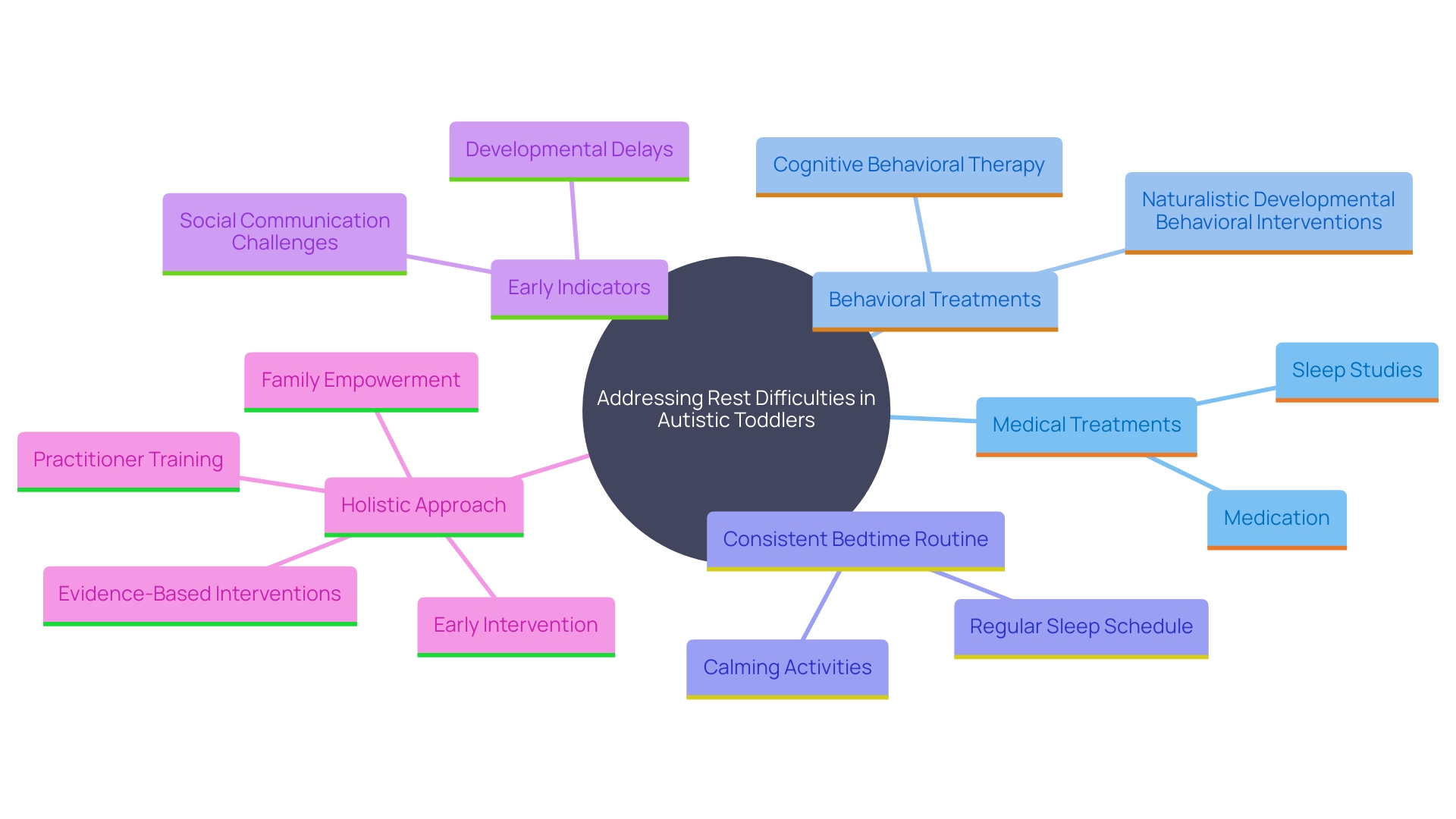
Conclusion
Sleep challenges are a significant concern for many families with autistic toddlers, affecting nearly 80% of children on the spectrum. The prevalence of these issues has been exacerbated by factors such as the pandemic, leading to disrupted routines and increased stress for both children and parents. Understanding the specific sleep problems faced by these children—ranging from insomnia to night terrors—highlights the urgent need for effective strategies and interventions.
Identifying the underlying causes of sleep disturbances is crucial. Factors such as sensory sensitivities, anxiety, and irregular melatonin production can all contribute to poor sleep quality. Tailored approaches, including structured bedtime routines and comfortable sleep environments, can significantly improve sleep outcomes.
Incorporating professional guidance and addressing sensory and behavioral needs can enhance the effectiveness of these strategies.
Establishing good sleep hygiene is essential for promoting restful sleep. Simple practices like limiting screen time, creating a calming bedtime routine, and recognizing signs of sleepiness can make a substantial difference. Additionally, medical and behavioral interventions may be necessary for some children, ensuring that any underlying issues are addressed comprehensively.
By adopting a proactive and informed approach, parents and caregivers can navigate the complexities of sleep challenges in autistic toddlers. With the right support and resources, families can foster better sleep quality, ultimately enhancing the overall well-being and development of their children.




